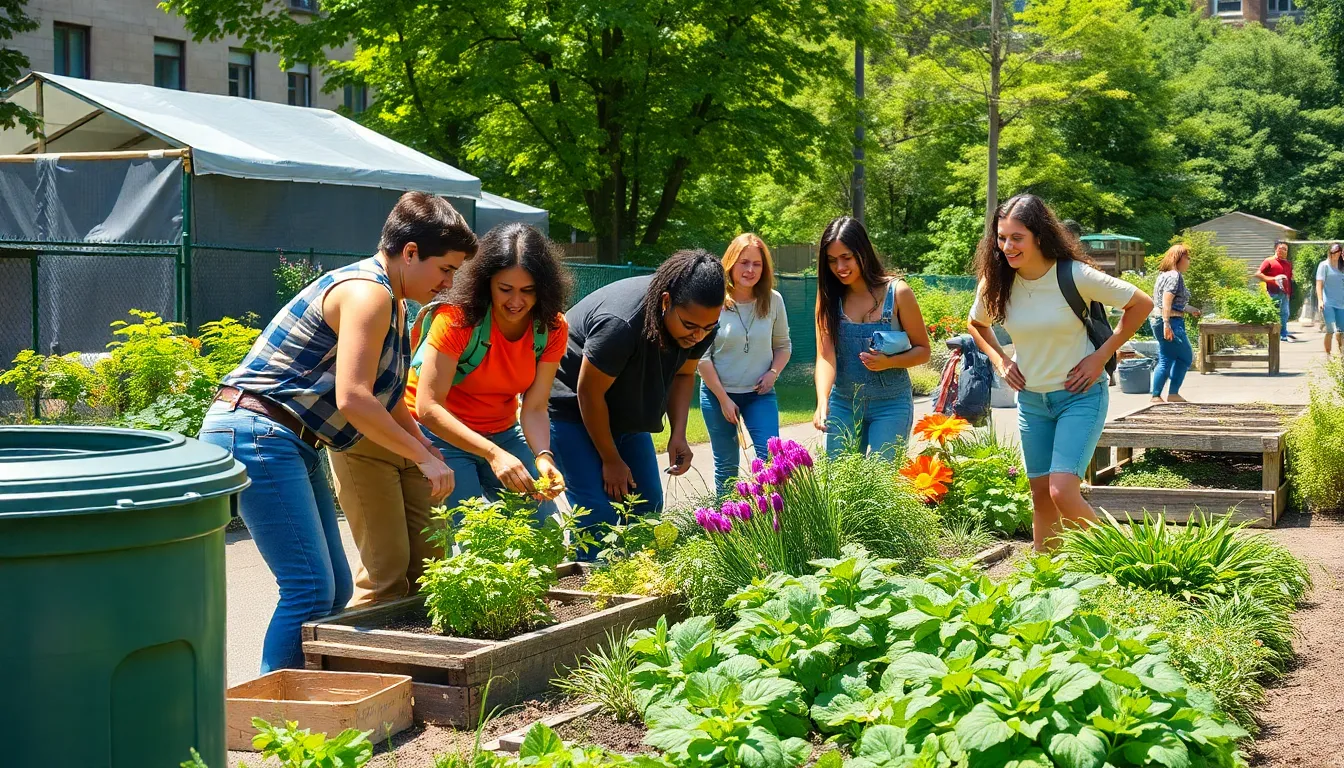In a world where plastic seems to multiply faster than rabbits and climate change feels like that annoying relative who just won’t leave, sustainable living emerges as the superhero we didn’t know we needed. Imagine a lifestyle that not only saves the planet but also makes you feel like a rock star while doing it. It’s not about wearing hemp sandals and chanting mantras (unless that’s your thing). It’s about making smart choices that benefit both you and Mother Earth.
Table of Contents
ToggleUnderstanding Sustainable Living
Sustainable living represents a balanced approach to meeting current needs without compromising future generations’ ability to meet theirs. It focuses on choices that nurture the environment while promoting personal well-being.
Definition and Importance
Sustainable living means adopting practices that minimize negative impacts on the planet. This approach addresses issues like resource depletion, pollution, and climate change. It encourages individuals to make informed decisions, promoting a healthier lifestyle. Engaging in sustainable practices can lead to significant reductions in carbon footprints. By doing so, communities witness both environmental and economic benefits, enhancing quality of life.
Key Principles
Several key principles define sustainable living. First, reducing waste emphasizes minimizing consumption and maximizing recycling. Second, conserving energy involves using renewable sources and improving energy efficiency. Third, supporting local economies helps foster sustainable sourcing and reduce transportation emissions. Additionally, practicing mindfulness in consumption encourages individuals to prioritize quality over quantity. Each principle creates a framework for making choices that benefit the environment and society.
Benefits of Sustainable Living

Sustainable living offers numerous advantages that enhance both personal well-being and the health of the planet.
Environmental Impact
Positive environmental impacts stem from sustainable practices. Minimizing waste through reduced consumption significantly lowers landfill contributions. Addressing resource depletion involves using renewable energy sources, which cuts greenhouse gas emissions. Promoting biodiversity contributes to the health of ecosystems, ensuring a more resilient environment. Implementing sustainable agriculture supports soil health and preserves water resources. Enhanced air quality results from reduced reliance on fossil fuels, protecting human health. Adopting these practices leads to cleaner environments and ensures future generations can thrive.
Economic Advantages
Economic benefits accompany sustainable living choices. Reduced energy consumption translates to lower utility bills, saving money over time. Supporting local businesses strengthens community economies, retaining wealth within neighborhoods. Investing in energy-efficient appliances results in long-term savings and increased home value. Decreased waste production lowers disposal costs for cities, funneling funds into other essential services. Promoting sustainable jobs and industries fosters economic growth while enhancing environmental stability. Each choice made reflects a commitment to economic resilience and social equity.
Practical Tips for Adopting Sustainable Living
Adopting sustainable living involves practical steps that individuals can integrate into their daily lives. Each choice contributes positively to the environment and personal well-being.
Reducing Waste
Minimizing waste starts with assessing personal consumption habits. Choosing reusable bags, bottles, and containers significantly lowers the reliance on single-use plastics. Implementing a compost system at home transforms organic waste into nutrient-rich soil, supporting local gardening efforts. Participating in community recycling programs also helps divert waste from landfills. By prioritizing quality over quantity, individuals can make mindful choices through reduced packaging products that last longer, promoting sustainability.
Energy Efficiency
Enhancing energy efficiency benefits both the environment and household budgets. Switching to LED lighting can cut electricity usage by up to 75%. Homeowners may consider investing in smart thermostats to optimize heating and cooling, ensuring comfort while reducing energy consumption. Sealing drafts and insulating homes protects against energy loss, making spaces more comfortable. Opting for Energy Star-rated appliances further boosts energy savings and lowers overall bills, creating a sustainable lifestyle.
Sustainable Food Choices
Making sustainable food choices significantly impacts personal health and the planet. Prioritizing seasonal and local produce reduces transportation emissions while supporting local farmers. Incorporating plant-based meals into diets can lower carbon footprints, as livestock farming contributes substantially to greenhouse gas emissions. Choosing organic options helps minimize chemical usage, promoting biodiversity. Additionally, participating in community-supported agriculture programs connects individuals with local food sources that foster sustainable farming practices.
Challenges in Sustainable Living
Sustainable living presents various challenges that individuals encounter while striving for a greener lifestyle. Addressing these challenges is essential for fostering broader adoption.
Common Misconceptions
Many people believe sustainable living requires extreme sacrifices. It’s often thought that adopting a sustainable lifestyle means giving up comfort or convenience. Some assume that eco-friendly products are always expensive, deterring them from switching. Misunderstandings about sustainability can create obstacles, leading to hesitation in making environmentally conscious choices. A prevalent myth is that sustainable living benefits only the affluent, ignoring its accessibility for everyone. Individuals often overlook the fact that small changes can lead to significant impacts.
Barriers to Adoption
Financial constraints frequently act as a barrier to adopting sustainable practices. Many individuals find eco-friendly options more costly, creating hesitation in making investments. Lack of knowledge about sustainable alternatives is another challenge. When people aren’t aware of available resources, they miss opportunities for greener choices. Additionally, convenience plays a role; sometimes, sustainable options require more effort than traditional methods. Time limitations can also hinder individuals from implementing sustainable practices into their daily routines. Overcoming these barriers is crucial for encouraging wider acceptance and integration of sustainable living principles.
Embracing sustainable living is a powerful way to contribute to a healthier planet while enhancing personal well-being. By making informed choices and adopting simple practices, individuals can significantly reduce their environmental impact. Each small step taken towards sustainability fosters a sense of community and connection to the world.
The journey toward sustainable living may come with challenges, but overcoming them leads to meaningful change. It’s about prioritizing quality over quantity and supporting practices that benefit both the environment and society. As more people adopt these principles, the collective impact can create a brighter future for generations to come.





